Get to Know Tough and Tiny Rufous Hummingbirds
Updated: Mar. 16, 2023
Orangey-red rufous hummingbirds are feisty and fierce. Learn to identify males and females, listen to their call and see their range map.
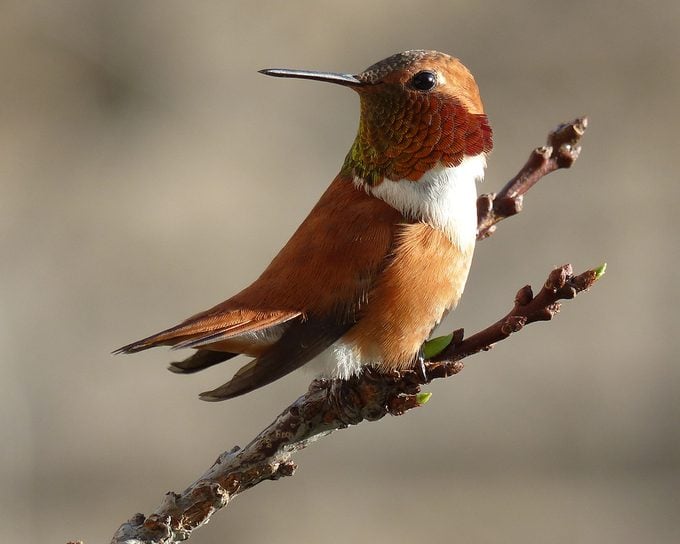
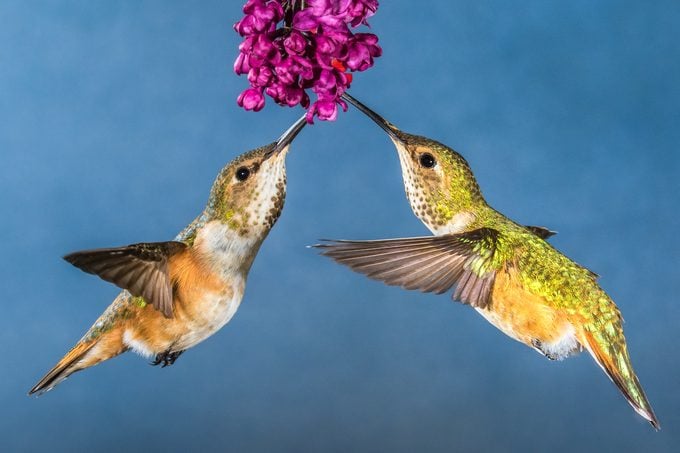
Male and Female Rufous Hummingbirds
You’ll know it’s a male rufous hummingbird if you see its back completely covered with coppery orange feathers. Males are reddish brown on the back, base of crown and most of the tail with an iridescent scarlet gorget (throat). Females and juveniles are sport more subdued coloring, with metallic green above, white below, and pale rust-colored sides. Both sexes are 3-3/4 inches long with a wingspan of 4-1/2 inches.
Learn how to identify Anna’s hummingbirds and ruby-throated hummingbirds.
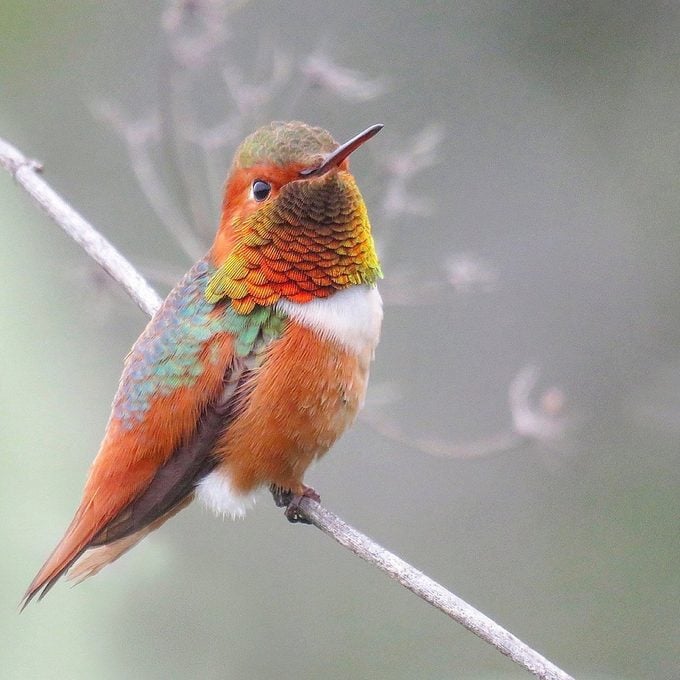
Rufous Hummingbird vs Allen’s Hummingbird
The Allen’s hummingbird, another species of the West, is often confused for the rufous. As a general rule of thumb, if the male’s back is more orange than green, it’s a rufous. Females and juveniles of both species are essentially identical.
Check out 10 adorable pictures of baby hummingbirds.
Territorial Behavior
If you reside in a northwestern state, like Washington or Oregon, and see a rumble break out at your backyard sugar-water feeder, a male rufous hummingbird is the likely culprit. Known for their aggressive nature, rufous males are particularly antagonistic during the late spring breeding season when territories are being established. Female rufous hummingbirds also jump into the fray to protect nesting territories and to drive off other rufous that get too close. They’ve even been known to chase chipmunks away.
Rufous are hard to miss as they zip, zoom and dive around. During courtship, a male rufous dives in a J-shaped or steep oval pattern when a female enters his breeding territory.
Check out 13 questions about hummingbird feeders answered by experts.
Rufous Hummingbird Facts
Scientific Name: Selasphorus rufus
Family: Hummingbird
Wing Speed: To help it hover, a rufous’ wings beat at high speeds—as fast as 52 to 62 wingbeats per second.
Check out more jaw-dropping facts about hummingbirds.
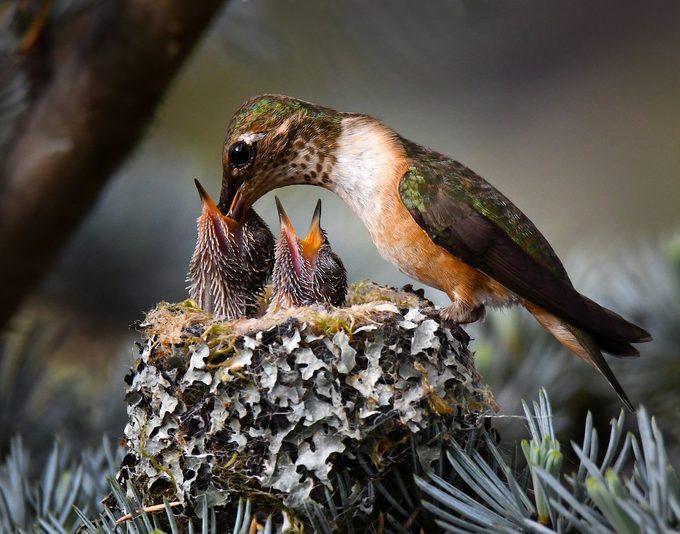
Rufous Hummingbird Nest
The male rufous doesn’t stick with one female, and pairs up with multiple partners throughout a single breeding season. That means the tough job of parenting falls entirely to the female hummingbird. She chooses a suitable nesting site and builds the small cup-shaped nest herself using plant matter, such as lichen, moss and bark. She then lays two white jelly bean-sized eggs, rarely three.
Psst—here’s everything you need to know about hummingbird nests.
What Do Rufous Hummingbirds Eat?
In western and southwestern states, it’s easy to attract these feisty little birds with hummingbird feeders. Skip the red dye and make your own sugar water by combining 1 part table sugar to 4 parts water. To keep the peace, set up more than one feeder and place each one at a distance and out of sight of the other. If multiple feeders are available, an aggressive rufous is more willing to share. These birds are also attracted to nectar and tree sap. Plant a few nectar-rich red blooms, such as bee balm and penstemon. Tube-shaped blooms also work well.
Rufous Hummingbird Call
Their call note is a “chewp chewp” and their wings make a high buzzing sound. Listen to the rufous hummingbird’s song.
Bird songs provided by the Cornell Lab of Ornithology.
Migration
Many species migrate, but rufous hummingbirds are known for having some of the longest migratory journeys for birds of their size. Some individual rufous even migrate from Mexico to Alaska—about 3,900 miles!
Learn more about where hummingbirds migrate in winter.
Rufous Hummingbird Range Map and Habitat
Of all western hummingbird species, rufous have the largest range and are the most likely to wander and veer east. The rufous is the only hummingbird species in the world whose breeding range extends as far north as southeastern Alaska. Even if you’re outside their range, a rufous may still visit your yard. In their southward migration in late summer and fall, rufous spread out across the western half of the continent, and some stray farther. They’ve been spotted in fall in every eastern state, and dozens spend the winter along the Gulf Coast. Their preferred habitat is open areas, residential areas and woodlands.
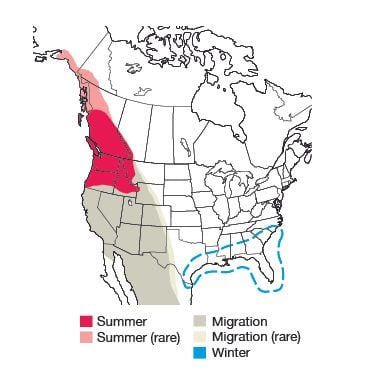 Range maps provided by Kaufman Field Guides, the official field guide of Birds & Blooms.
Range maps provided by Kaufman Field Guides, the official field guide of Birds & Blooms.
Next, check out frequently asked questions about attracting hummingbirds.
